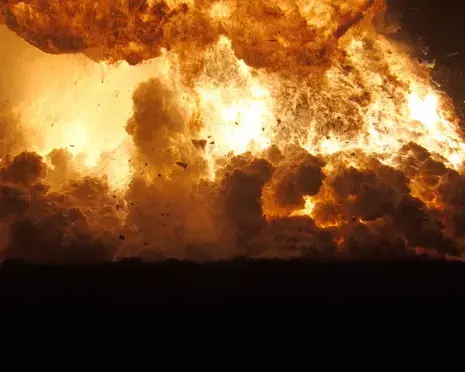SpaceX Rocket Explodes, Marking New Hurdle for Elon Musk's Mars Mission

One of Elon Musk's SpaceX Starships exploded during a routine test in Texas, officials said, in the latest blow to the billionaire's aim of transforming humanity into an interplanetary species.
The Starship 36 suffered "catastrophic failure and exploded" at the Starbase launch site just after 11 p.m. on Wednesday (0400 GMT Thursday), according to a Facebook post by Cameron County police.
The post included a video of the mega-rocket linked to the launch arm, followed by a flash and a towering, blazing explosion.
SpaceX stated that the rocket was ready for its tenth flight test when it "experienced a major anomaly while on a test stand at Starbase," but did not elaborate on the nature of the issue.
"A safety clear area around the site was maintained throughout the operation, and all personnel are safe and accounted for," tweeted SpaceX.
"There are no hazards to residents in surrounding communities, and we ask that individuals do not attempt to approach the area while safing operations continue."
According to Cameron County officials, the Starship explosion occurred during a "routine static fire test".
During a static fire, which is part of the pre-launch operations, the Starship's Super Heavy rocket is anchored to the ground to prevent it from lifting off during the test firing.
Starbase, located near the Texas-Mexico border, serves as Musk's space project headquarters.
Starship, standing 123 meters (403 feet) tall, is the world's largest and most powerful rocket, and it is essential to Musk's long-term aim of colonizing Mars.
The Starship is described as a fully reusable rocket with a payload capability of up to 150 metric tonnes.
A prototype starship exploded over the Indian Ocean in late May.
The largest and most powerful launch vehicle ever built lifted off from the Starbase site on May 27. Still, the first-stage Super Heavy rocket exploded instead of splashing down in the Gulf of Mexico as anticipated.
The preceding two missions similarly failed, with the upper stage disintegrating over the Caribbean.
The failures are unlikely to have a significant impact on Musk's space ambitions.
SpaceX is hoping that its "fail fast, learn fast" approach, which has helped it dominate commercial spaceflight, will eventually pay off.
The business has captured the Super Heavy booster in the launch tower's massive robotic arms three times, a daring engineering accomplishment it regards as critical to speedy reusability and cost savings.
NASA is increasingly reliant on SpaceX's Dragon spacecraft, which transports astronauts to and from the International Space Station.
In early May, the Federal Aviation Administration allowed an increase in the number of yearly Starship rocket launches from five to 25, claiming that the increased frequency would have no negative environmental impact.
The ruling ignored environmental groups' concerns that the expansion could jeopardize marine turtles and shorebirds.